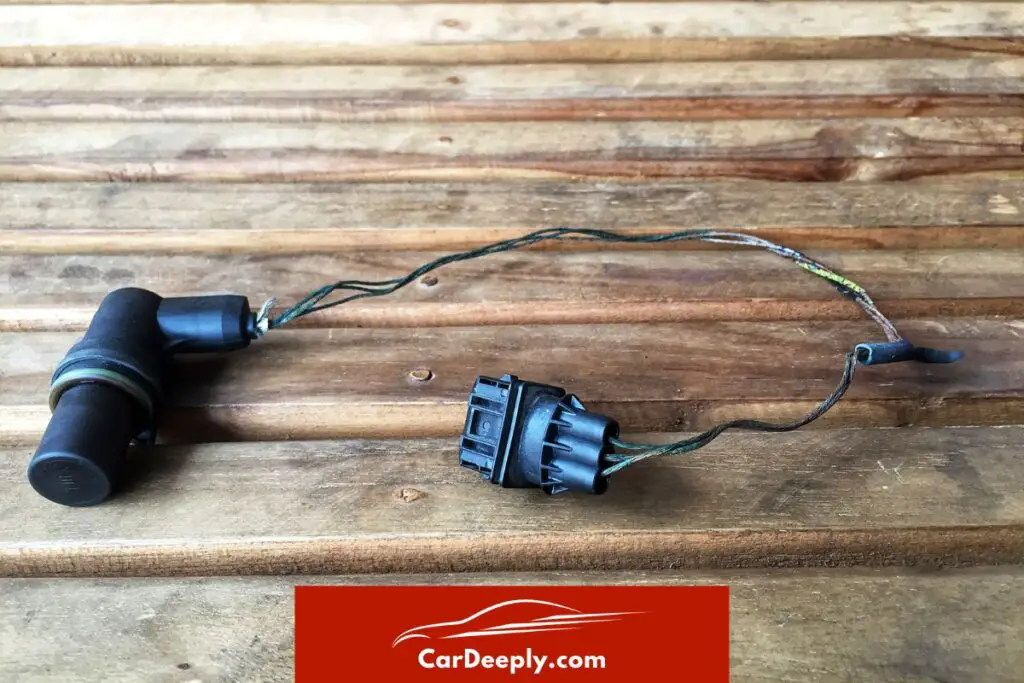Replaced camshaft position sensor but still got code” – sounds familiar? This common issue can leave even seasoned car enthusiasts scratching their heads.
This comprehensive guide helps you navigate this tricky situation with practical advice and actionable tips.
By reading on, you’ll avoid common pitfalls and gain:
- Understanding of the problem
- Practical troubleshooting steps
- Effective solutions to fix it
So buckle up, and let’s dive into the world of camshaft position sensors and error codes. Your journey to a smoother ride starts here!
Advertising links are marked with *. We receive a small commission on sales, nothing changes for you.
Key Takeaways

- The camshaft position sensor plays a crucial role in engine performance.
- Faulty sensors can cause issues like engine misfires and reduced power.
- Persistent error codes can occur due to incorrect installation or other defective parts.
- Regular checks and proper installation can prevent sensor-related issues.
- Driving with a bad sensor can lead to increased fuel consumption and potential engine damage.
What is a Camshaft Position Sensor?
Let’s kick things off by understanding the star of our show – the camshaft position sensor.
This little device is a key player in your car’s engine. It’s like an orchestra conductor, ensuring every part is in sync and performing at its best.
- Role: It monitors the speed at which the camshaft is rotating.
- Data: It sends this information to the engine control unit (ECU).
- Impact: This data is crucial for managing the timing of fuel injection and ignition.
How Does a Camshaft Position Sensor Work?
Now that we know what it is let’s dive into how it works. The camshaft position sensor is a magnetic device that gathers information about the camshaft speed.
It’s a detective, always looking for changes in the camshaft’s position.
- Detection: It identifies the camshaft’s speed and position.
- Transmission: It sends this data to the ECU.
- Action: The ECU uses this information to control the timing of ignition and fuel injection.
Importance of Camshaft Position Sensor in Engine Performance
The camshaft position sensor might be small, but it’s mighty important. It’s like the unsung hero of your engine, working behind the scenes to keep everything running smoothly.
- Timing: It ensures the correct timing of fuel injection and ignition.
- Performance: It helps your engine run efficiently and smoothly.
- Prevention: It helps prevent engine misfires and other issues.
Common Symptoms of a Faulty Camshaft Position Sensor
Like a human, your car will show signs when it’s not feeling well. Here are some symptoms that might indicate a faulty camshaft position sensor. It’s like your car’s saying, “Hey, I need some attention here!”
- Warning: The check engine light may come on.
- Ignition: You might have trouble starting the motor.
- Performance: Your car might stall or have reduced power.
Remember, these symptoms could also indicate other issues, so getting a proper diagnosis is important. But if you’ve replaced your camshaft position sensor and still get the code, don’t worry.
We’re about to dive into that next!
Replacing the Camshaft Position Sensor
Let’s get our hands dirty and discuss replacing the camshaft position sensor. It’s like changing a light bulb but a bit more complex.
- Access: First, you need to locate and access the sensor.
- Removal: Then, carefully remove the faulty sensor.
- Installation: Finally, install the new sensor in its place.
But what if you’ve done all that and you’re still getting error codes? Well, let’s dive into that.
Why You Might Still Get Error Codes After Replacing the Sensor
You’ve replaced the camshaft position sensor, but the error codes are still popping up. It’s like a bad dream that won’t end. But don’t worry. We’re here to help.
- Incorrect Installation: The new sensor might need to be installed correctly.
- Faulty New Sensor: The new sensor itself could be faulty.
- Other Issues: The problem might be something different than the sensor.
Understanding and Addressing Typical Error Codes
When dealing with a camshaft position sensor, you might encounter a few common error codes.
Let’s break them down:
1. P0340 – Camshaft Position Sensor Circuit Malfunction
This code indicates that the ECU has detected a problem with the camshaft position sensor circuit. This could be due to a faulty sensor, wiring issues, or a problem with the ECU itself. To fix this, check the sensor and its wiring, and consider getting the ECU checked if the problem persists.
2. P0341 – Camshaft Position Sensor Circuit Range/Performance
This code suggests that the signal from the camshaft position sensor is out of range or performing poorly. This could be due to a faulty sensor, a timing chain issue, or a problem with the variable valve timing (VVT) system. To address this, check the sensor, the timing chain, and the VVT system.
3. P0344 – Camshaft Position Sensor Circuit Intermittent
This code means the ECU gets an intermittent signal from the camshaft position sensor. This could be due to a loose connection, a faulty sensor, or a problem with the ECU. To fix this, check the sensor and its connections, and consider getting the ECU checked if the problem continues.
Remember, these are just a few common error codes related to the camshaft position sensor. If you’re getting a different code or unsure how to address these issues, it’s always a good idea to consult with a professional.
Possible Causes for Persistent Error Codes
What could be causing these persistent error codes? Let’s put on our detective hats and investigate.
- Wiring Issues: There could be loose connections or damaged wires.
- ECU Problems: The engine control unit might be malfunctioning.
- Other Faulty Parts: Other parts, like the crankshaft position sensor, could be faulty.
Steps to Take If You Still Get Error Codes After Replacement
Now that we’ve identified the possible culprits let’s talk about what you can do to fix the issue.
- Check Installation: Make sure the new sensor is installed correctly.
- Inspect Wiring: Check for any loose connections or damaged wires.
- Diagnose ECU: Consider getting the ECU checked.
Maintenance Tips for Camshaft Position Sensor
To wrap things up, let’s review some maintenance tips to keep your camshaft position sensor in top shape.
- Regular Checks: Regularly check the sensor and its connections.
- Proper Installation: Ensure the sensor is installed correctly.
- Timely Replacement: Replace the sensor at the first sign of trouble.
Frequently Asked Questions
Can a faulty camshaft position sensor cause damage to my engine?
Yes, a faulty camshaft position sensor can potentially cause damage to your engine. The sensor plays a crucial role in fuel injection and ignition timing. If it’s not working properly, it can lead to engine misfires, reduced power, and even engine damage in severe cases.
How often should I replace my camshaft position sensor?
There’s no set schedule for replacing the camshaft position sensor. It’s more about checking for symptoms of a faulty sensor, such as the check engine light coming on, difficulty starting the motor, or reduced engine power. If you notice these signs, checking the sensor is a good idea.
Can I drive my car with a bad camshaft position sensor?
While driving with a bad camshaft position sensor might be possible, it’s not recommended. A faulty sensor can lead to poor engine performance, increased fuel consumption, and even potential engine damage. It’s best to address the issue immediately to avoid further problems.
Can a camshaft position sensor be cleaned?
While cleaning might help in some cases, replacing a faulty camshaft position sensor is usually best. Over time, the sensor can wear out and fail, and more than cleaning might be needed to restore it to proper working order.
What’s the difference between a camshaft position sensor and a crankshaft position sensor?
Both sensors play crucial roles in your engine’s performance, but they monitor different parts. The camshaft position sensor monitors the speed of the camshaft, while the crankshaft position sensor monitors the speed and position of the crankshaft.
The ECU uses both data sets to control the timing of ignition and fuel injection.
Conclusion
And there you have it!
A comprehensive guide to understanding and addressing the issue of persistent error codes after replacing the camshaft position sensor. Remember, it’s always better to be proactive than reactive when it comes to car maintenance.
So, keep these tips in mind, and you’ll be well on your way to a smoother ride. Safe driving!

Sebastian loves convertibles and drove a BMW 335i for a long time (325 hp is just a dream). Today, with two children, he is more concerned with SUVs and family-friendly vehicles. In addition to an Audi A4 Avant, he also drives a Cupra Formentor VZ – even as a family man, you can’t do without speed. Get to know Sebastian better and visit the About Us page.
Advertising links are marked with *. We receive a small commission on sales, nothing changes for you.

